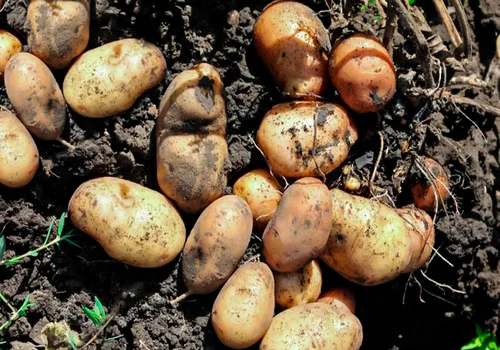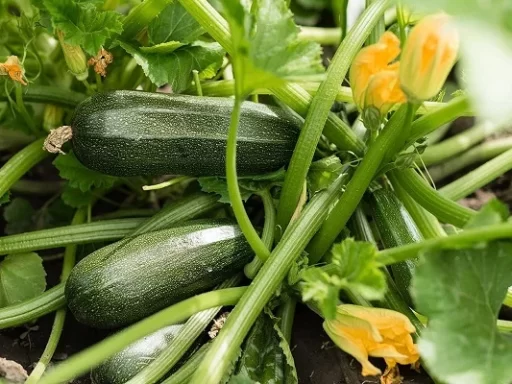Potatoes epitomize the joy of gardening. From planting the seeds to unearthing the buried treasure at harvest time, cultivating potatoes is one of the most satisfying gardening experiences. Whether you’re an experienced gardener or just getting started, this guide will walk you through how to grow potatoes successfully, including essential tips for ensuring a bountiful crop.
Choosing the Right Potato Variety
The first step in growing potatoes is selecting the right variety. Potatoes come in different types, each suited for different cooking methods. Here are the main categories to consider:
- Floury Potatoes: Perfect for mashing or roasting. They become fluffy and light when cooked, making them ideal for classic mashed potatoes or crispy roasties.
- Waxy Potatoes: Best for boiling or using in salads. They retain their shape when cooked, offering a firmer texture that’s perfect for potato salads.
In addition to choosing based on texture and flavor, you’ll need to consider when you want to harvest your potatoes. Potatoes are divided into three main categories based on growing and harvesting times:
- First Earlies: These are the first to be planted in early spring, and they grow quickly, providing a harvest as early as summer.
- Second Earlies: These take a little longer to mature and are harvested during the second half of summer.
- Main Crop Potatoes: These are planted in mid-spring and take the longest to grow, but they are the best for long-term storage, often lasting through winter when stored properly.
Preparing Seed Potatoes
Potatoes that are specifically sold for planting are referred to as “seed potatoes.” When you buy seed potatoes, you’ll want to get them sprouted through a process called chitting. This process involves placing them in a frost-free, bright location to encourage the growth of sturdy shoots. Chitting speeds up the growing process, ensuring that your potatoes are ready to root as soon as they are planted.
If your potatoes have sprouted long, pale shoots, they may have been left in the dark too long. Don’t worry if you haven’t had time to chit them—just plant them when it’s time, and they’ll still catch up in the growing process.
Planting Potatoes
When it’s time to plant, choose a sunny spot in your garden with well-drained soil. Potatoes are hungry plants, so they require nutrient-rich soil. Before planting, add well-rotted compost to the area to enrich the soil.

Potatoes can be planted using different methods, depending on the space available:
- Planting in Rows: This is a traditional method where trenches are dug about 60–75 cm (2–2.5 feet) apart. Potatoes are planted around 30 cm (1 foot) apart within the trench.
- Raised Beds: Potatoes can also be grown in raised beds, which provide better drainage and help warm up the soil earlier in the season.
- Container Growing: If you have limited space, consider growing potatoes in large containers, such as old compost sacks or purpose-built potato bags. Fill the container with about 10 cm (4 inches) of potting mix, then plant one or two seed potatoes. As the foliage grows, continue adding more soil until the container is full.
Spacing and Planting Depth
For first earlies, plant the seed potatoes about 35–40 cm (14–16 inches) apart. If you’re planting main crop potatoes, space them a bit farther apart at 45 cm (18 inches). When planting, dig a hole deep enough to cover the potato with about 15 cm (6 inches) of soil above it. You can also add a handful of organic fertilizer, such as chicken manure pellets, to give the plants a nutrient boost.
Hilling Potatoes
As your potato plants grow, you’ll want to “hill” them. Hilling involves mounding soil around the base of the plants to create more space for tubers to grow and prevent potatoes from being exposed to light, which can cause them to turn green and inedible.
Watering and Care
Potatoes require regular watering, especially during dry spells. Proper watering is key to swelling the tubers and ensuring a plentiful harvest. Be sure to keep the soil consistently moist but not waterlogged.
Frost protection is also important, especially for early potatoes. If frost is forecast, protect your plants by covering them with a fleece or row cover, or simply mound more soil over the shoots to insulate them.
Harvesting Potatoes
- Early Potatoes: These are ready to harvest while the plants are still in flower. The potatoes should be about the size of a hen’s egg.
- Main Crop Potatoes: Harvest these toward the end of the growing season, when the foliage starts to die back. Use a garden fork to carefully dig around the plants and lift the potatoes.
Once harvested, leave the potatoes on the soil surface for a few hours to allow the skins to dry out. This helps prepare them for storage.
Storing Potatoes
Main crop potatoes can be stored for several months if kept in the right conditions. Store them in a dark, cool, frost-free place such as a garage or basement. Be sure to pack them in breathable sacks or sturdy cardboard boxes, and only store potatoes that are free of damage or disease. Check your stored potatoes regularly and remove any that have softened or begun to spoil to prevent rot from spreading.
Common Potato Diseases and Pests
Unfortunately, potatoes can fall prey to diseases such as scab and late blight. To prevent these issues:
- Scab: This causes warty patches on the skin of potatoes and is typically due to dry soil. Keep the soil consistently moist during tuber formation to avoid scab.
- Blight: Late blight is a common issue during warm, damp weather. It causes dark patches on leaves and can quickly kill the plant. Early-harvest varieties are less likely to be affected by blight. If blight strikes, act quickly by cutting down the foliage and harvesting the potatoes to prevent the spread of the disease.
Frequently Asked Questions
- What type of potatoes should I grow for mashed potatoes? Floury potatoes like Russets are ideal for mashed potatoes due to their fluffy texture when cooked.
- When is the best time to plant potatoes? Plant first earlies in early spring, second earlies in mid-spring, and main crops in late spring.
- How long does it take for potatoes to grow? First earlies are ready to harvest in about 10–12 weeks, second earlies in 14–16 weeks, and main crops take 18–20 weeks.
- How do I know when my potatoes are ready to harvest? Early potatoes are ready when the plants are in flower. Main crops can be harvested when the foliage starts to die back.
- How do I prevent my potatoes from turning green? Hilling soil around the plants and keeping harvested potatoes out of the light will prevent them from turning green.
- Can I grow potatoes in containers? Yes, potatoes grow well in large containers or sacks. Start with a few inches of soil and add more as the plants grow.
- How should I store potatoes for the winter? Store your potatoes in a dark, cool, and frost-free place in breathable sacks or boxes. Regularly check for any spoiled potatoes.




